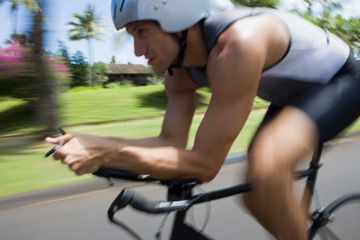Given the choice, few of us would choose to go bicycling in the rain -- but it does happen. Some people commute by bike regardless if the weather is fair or foul, and some people live in Seattle. If you're a regular rider and haven't coped with rain yet, you probably will; the weather catches us all by surprise sometimes. If you're caught in the rain and have no choice but to keep on riding, it's reasonably easy to cope as long as you've stashed away some basic gear. If all you've got in your pocket is a garbage bag, you can make an impromptu poncho and keep going, but it's easy to have more reliable gear ready for any type of weather. Better preparation will ensure you have a more comfortable trip.
Believe it or not, there are people who actually enjoy the peacefulness, solitude and extra challenges of biking in the rain. Their experiences yield worthwhile advice (even if their cycling preferences are hard to believe). Riding in the rain presents many of the same hazards as riding at night, but with a little practice, experience and awareness, you'll be all right. Read on to learn how to tackle a rain ride, whether you've planned it or you're caught in a surprise downpour.
Advertisement


